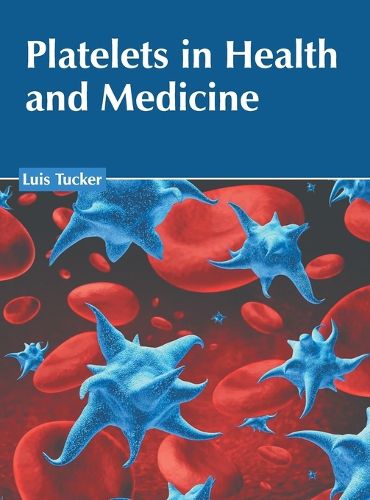Readings Newsletter
Become a Readings Member to make your shopping experience even easier.
Sign in or sign up for free!
You’re not far away from qualifying for FREE standard shipping within Australia
You’ve qualified for FREE standard shipping within Australia
The cart is loading…






Platelets are tiny blood cells that help in the formation of clots which helps to stop bleeding. They rush to the damaged site in the body, where they form a clot as a plug to stop the damage. They are formed in the bone marrow, and white and red blood cells. The body requires a specific number of platelet count to function properly. A normal platelet count in human body is considered to be 150,000 to 450,000 platelets per microliter of blood. The risk of bleeding develops if the platelet count falls below 10,000 to 20,000. Abnormal platelet count may result in several health conditions, such as thrombocytopenia, essential thrombocythemia, secondary thrombocytosis and platelet dysfunction. Thrombocytopenia is a condition in which bone marrow makes too few platelets. The common causes of this disease include cancer, liver disease, pregnancy, infections, and an abnormal immune system. Diagnosis of conditions related to platelets involves a simple blood test to determine the platelet count. This book provides significant information of platelets to help develop a good understanding of their role in health and medicine. Those in search of information to further their knowledge will be greatly assisted by it.
$9.00 standard shipping within Australia
FREE standard shipping within Australia for orders over $100.00
Express & International shipping calculated at checkout
Platelets are tiny blood cells that help in the formation of clots which helps to stop bleeding. They rush to the damaged site in the body, where they form a clot as a plug to stop the damage. They are formed in the bone marrow, and white and red blood cells. The body requires a specific number of platelet count to function properly. A normal platelet count in human body is considered to be 150,000 to 450,000 platelets per microliter of blood. The risk of bleeding develops if the platelet count falls below 10,000 to 20,000. Abnormal platelet count may result in several health conditions, such as thrombocytopenia, essential thrombocythemia, secondary thrombocytosis and platelet dysfunction. Thrombocytopenia is a condition in which bone marrow makes too few platelets. The common causes of this disease include cancer, liver disease, pregnancy, infections, and an abnormal immune system. Diagnosis of conditions related to platelets involves a simple blood test to determine the platelet count. This book provides significant information of platelets to help develop a good understanding of their role in health and medicine. Those in search of information to further their knowledge will be greatly assisted by it.